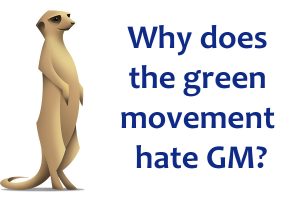Why does the green movement hate GM?

This month, my friend James has written a brilliant piece exploring and (largely) debunking a lot of the common fears and complaints about genetically modified plants and crops. One of the reasons I asked him to write something on this topic is because it’s something I hear asked a lot. But it is also a topic that people seem to lump in with the general ‘green’ environmental movement – many organisations and individuals who describe themselves as being environmentalists also advocate the banning of GM products. Which seems very strange to me because as a biologist, I’ve never seen anything wrong with the concept of GM.
Continue readingThis post is available for early view by patrons. It becomes public at 2:00pm on Sunday December 15th, 2019.
